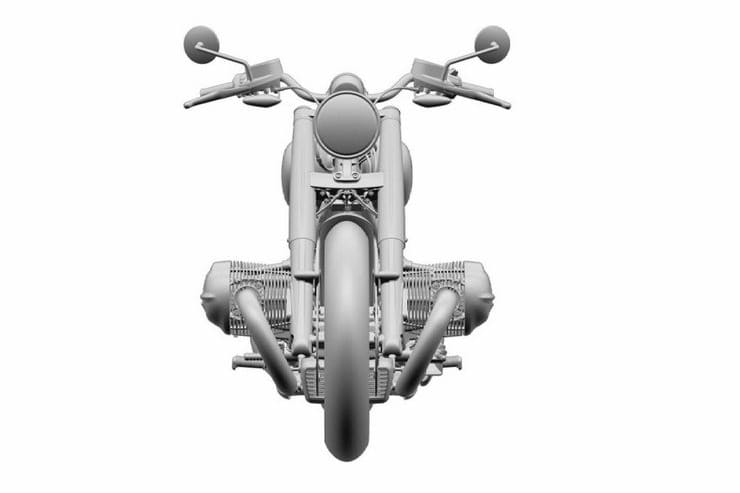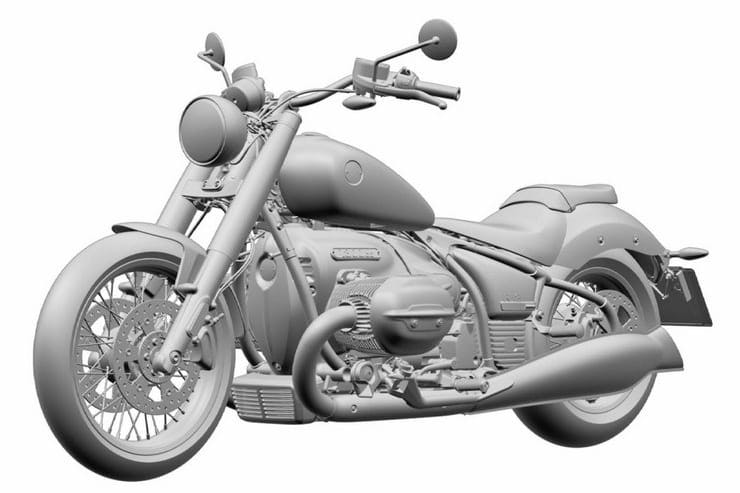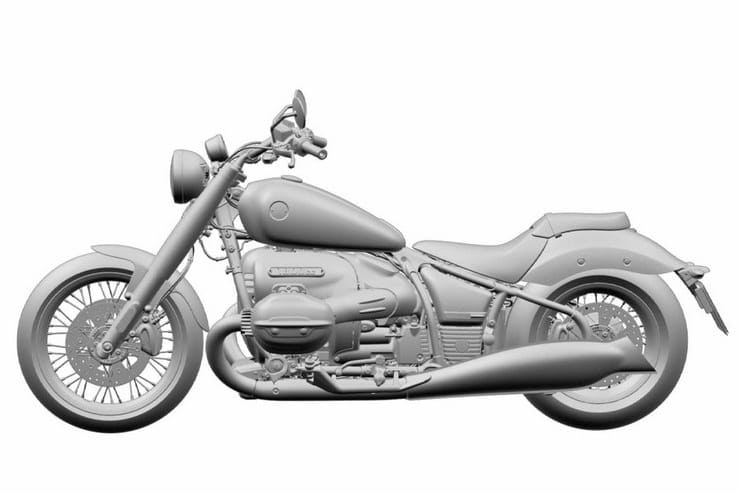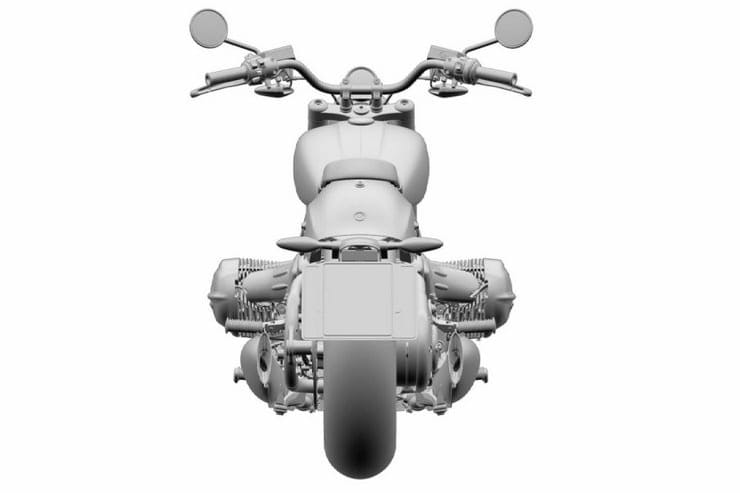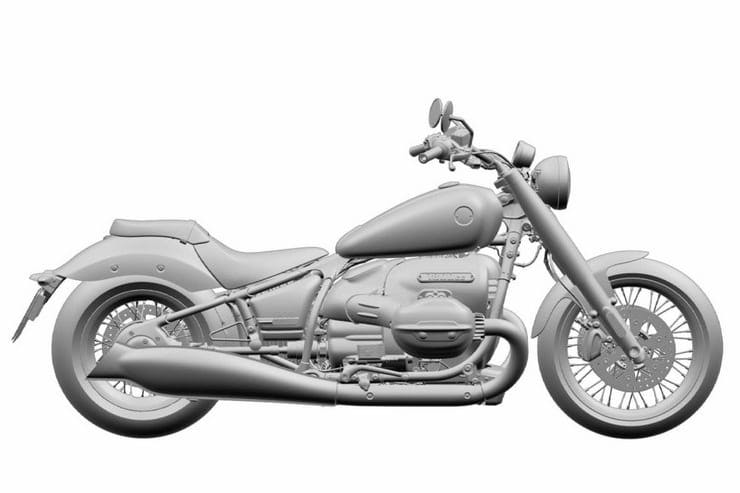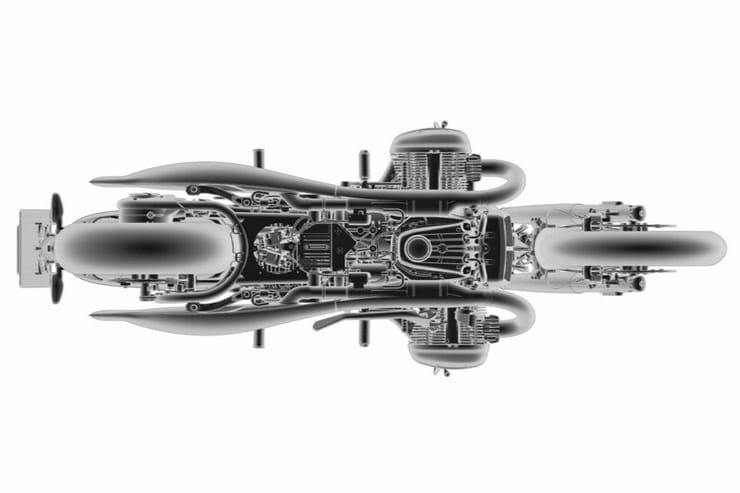BMW R18 fully revealed in patent drawings
By Ben Purvis
Motorcycle Journalist
02.03.2020
BMW’s upcoming re-entry to the cruiser market is becoming one of those long, drawn-out unveilings that PR firms seem to love. But now Brazil’s patent office has jumped in with a spoiler by publishing full design patents for two versions of the massive R18.
Both bikes share the same 1802cc, air-cooled engine, which uses old-school pushrods to operate four valves per cylinder. BMW has already announced the engine’s performance figures – 116.5lbft of torque at a mere 3000rpm is the most important number, but the engine also makes more than 110lbft all the way from 2000rpm to 4000rpm. Peak power is a less impressive-sounding 90hp, but comes at only 4750rpm.
The frame is also shared by both bikes. It’s a soft-tail design with hidden rear suspension to give the look of a pre-war hardtail, and looks identical to the chassis used by BMW’s Concept R18 and R18/2 show bikes, which both appeared at events last year.
When it comes to styling, the first of the production R18s will be a conventional naked cruiser. Its styling is very similar to the R18/2 concept seen at EICMA last year, but without that bike’s small nose fairing and alloy wheels. Instead it uses wire wheels and a traditional round headlight.
The forks look the same as the concept’s but the brakes are toned down, with smaller calipers instead of the show bike’s radial Brembos. The low rider’s seat is similar to the R18/2’s but gets joined by a separate pillion pad on the rear fender. On board, a single circular instrument is all you get – presumably combining an analogue rev counter with a digital display for speed and other information.
Overall, it’s an impressive-looking machine, although it’s easy to imagine buyers rushing to the options catalogue to replace the rather ungainly exhausts, which try to mimic old-fashioned fishtail pipes but gain a rather pregnant-looking bulge on each side to hide the inevitably-bulky silencers.
The second version of the bike is a much better-equipped bagger model based on the same mechanical parts.
Unlike the cruiser, it has a wide front fairing that’s bolted to the bars, so it turns with the steering. A well-stocked dash includes four round gauges above what looks like a massive touchscreen, no doubt incorporating the infotainment and navigation systems. Radar-assisted cruise control is believed to be one of the many options that will be offered with the R18 in its touring form.
The bike’s fuel tank is wider and taller, suggesting more capacity and range, and its merges into a much thicker, one-piece seat that offers more comfort to both rider and passenger.
The bars are lower and pulled back towards the rider for a less tiring riding position, and those odd-looking exhausts are replaced with more normal-style silencers. They sit below panniers and look like they’ll be the first thing to hit the ground come any spirited cornering.
The overhead and head-on shots of both bikes give the clearest view yet of the vast width of the new engine, clearly illustrating why BMW opted to use relatively compact pushrod-operated valvetrains rather than overhead camshafts. From underneath we get a glimpse of how BMW has followed Triumph’s lead by using false covers over the real exhausts to help hide catalytic converters.
We’re still waiting to hear when BMW will officially launch the production versions of the R18, but since the firm has been taking orders for the bike since late last year it can’t be long now.
Share on social media:
